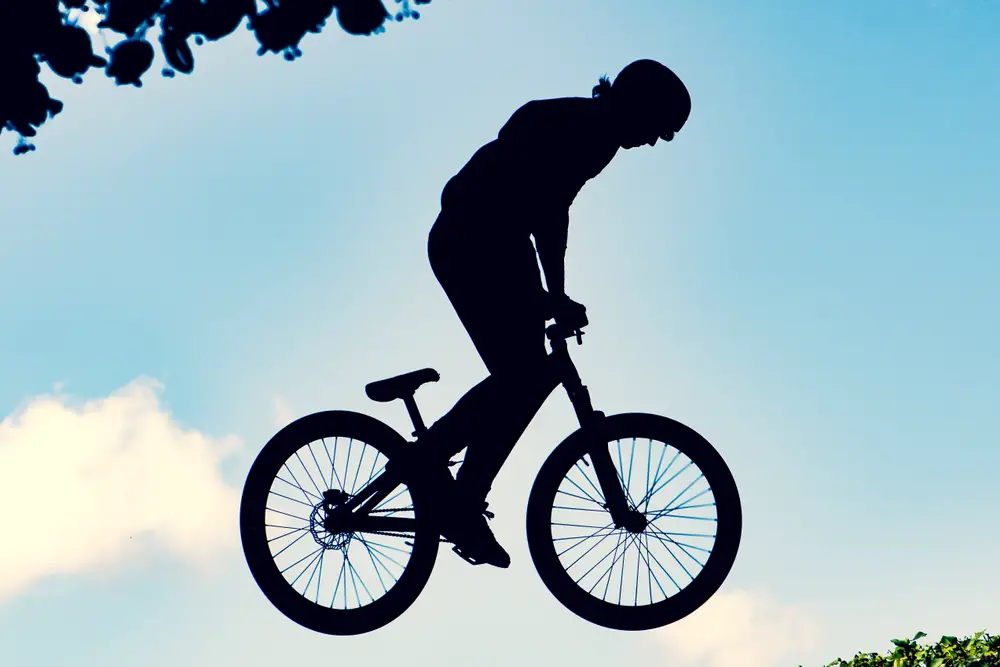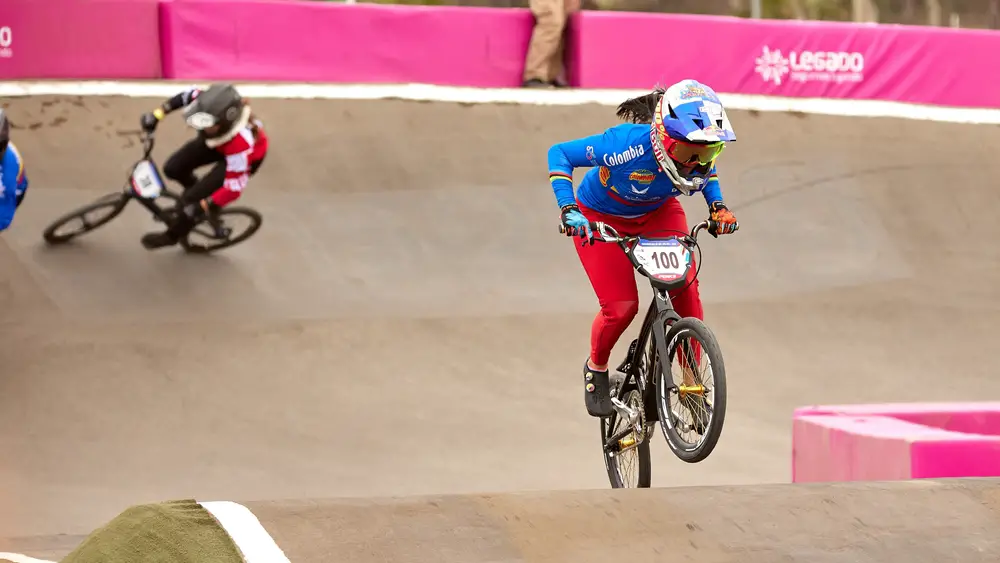BMX Racing, a branch of BMX cycling, is a sport that consists of races on tracks with different technical characteristics. The sport is popular with both amateurs and professionals, and has been part of the Olympics since 2008.
The sport is known for combining speed, skill and strategy, with riders competing on dirt tracks with jumps, sharp bends and various other types of obstacles.
And to ensure the safety of competitions and fairness between athletes, there are the rules of cycling BMX Racing. Understanding these rules is essential to knowing the structure and size of the track, the duration of the races, the scoring system, the number of participants, what the infractions and penalties are and much more!
So let’s get to know the main rules of BMX Racing!
Open your Betano account and get up to 1,000 reais in bonuses.
PIX payments, live games and super odds!
Click here to open your account!

BMX Racing rules: complete list
- Track;
- Race;
- Scoring;
- Participants;
- Equipment;
- Penalties and infractions;
- Start;
- Driving;
- Climate;
- Training;
- Category.
BMX Racing rules: track
The BMX Racing track needs to be suitable for the riders’ best performance and the dynamics of the races.
According to the rules of the International Cycling Union (UCI), a BMX track must be between 300 and 400 meters long, with a minimum width of 5 meters to ensure enough space for overtaking and maneuvers.
The track is therefore made up of various technical elements. Here are the main ones:
- Starting ramps: an inclined ramp about 1.5 to 2.5 meters high is made to provide the initial impetus for the riders.
- Straights and curves: there are also straight tracks on which riders can reach high speeds, and these are interspersed with sharp curves, usually 180 degrees. All of this challenges the athlete’s maneuvering skills.
- Obstacles: jumps (doubles, triples, tabletops), whoops (sequence of small undulations) and rollers (small gentle hills) are distributed along the track to test the technique and strategy of BMX Racing competitors.
BMX Racing rules: racing
BMX Racing races are known for their short duration and high intensity. Typically, a race lasts between 30 and 45 seconds, depending on the complexity of the track and the skill level of the competitors. This short duration requires riders to demonstrate a combination of explosiveness at the start, as well as technique and endurance throughout the course.
BMX Racing rules: scoring
In BMX Racing, the scoring system is designed to reward consistency and performance over several races.
In official events, riders take part in several qualifying rounds, and points are awarded based on the finishing position in each race. Here’s how it works
- 1st place: 1 point
- 2nd place: 2 points
- 3rd place: 3 points
- 4th place: 4 points
The aim is to accumulate as few points as possible, as the riders with the lowest scores advance to the knockout rounds (quarter-finals, semi-finals and final). In the final, the rider who crosses the finish line first is declared the winner of the competition.
BMX Racing rules: participants
The number of participants in a BMX Racing race can vary according to the competition, but each heat usually has eight riders.
This configuration was developed to balance competition and safety, allowing enough space for riders to maneuver while reducing the risk of collisions.
BMX Racing rules: equipment
BMX Racing riders must use specific safety equipment to ensure protection during races, for themselves, their rivals and those watching. The mandatory items are:
- Full face helmet: is the name given to a helmet that covers the entire head and has chin protection.
- Gloves: are used to protect the hands in the event of a fall.
- Long-sleeved shirts and long pants: are worn to protect the skin from possible abrasions.
- Knee and elbow pads: are there to cushion impacts in the event of a fall.
BMX Racing rules: infractions and penalties
To maintain the integrity and safety of competitions, there are various infractions and penalties that can be applied to riders. Some of the common infractions include:
- False start: if a rider starts pedaling before the start signal, they may be penalized or disqualified.
- Intentional obstruction: it is forbidden to block another rider to prevent their advance, and this practice may result in penalties.
- Leaving the track: leaving the boundaries of the track can result in penalties or disqualification of the athlete, depending on the severity and intent.
- Improper equipment: some international competitions require the use of mandatory safety equipment. Therefore, improper use or lack of equipment may result in disqualification.
BMX Racing rules: start
The start procedure in BMX Racing is very critical and highly regulated to ensure the safety of the riders as well as equal chances.
The start takes place on a sloping ramp, where riders wait for the start behind a railing, which drops at the start signal. The exit is controlled by an automated system that gives an audible and visual warning before releasing the riders.
BMX Racing rules: driving
During the race, riders must follow specific driving rules to ensure safety and fair competitiveness:
- Racing Line: Drivers must not abruptly deviate from their racing line to block other competitors.
- Overtaking: Overtaking must be done safely, without intentional physical contact.
- Respect for Safety: Dangerous maneuvers that endanger the safety of other riders are strictly forbidden.
BMX Racing rules: weather
Weather conditions play an important role in BMX Racing competitions. Tournaments can be held in various weather conditions, but safety is always the priority.
Therefore, in the event of extreme conditions such as heavy rain or electrical storms, races may be postponed or canceled to ensure the safety of participants and those watching.
BMX Racing rules: training
Before official competitions, riders have the opportunity to train on the track to familiarize themselves with its layout and obstacles. The training sessions, however, are organized according to the riders’ categories to avoid congestion and collisions.
In addition, official BMX Racing competitions feature qualifying rounds in which riders compete to secure their place in the knockout stages.
BMX Racing rules: categories
BMX Racing riders are divided into several categories, based on age and skill level. Here are the main ones:
- Age: there are categories by age, such as 12 and under, 13-14, 15-16, etc.
- Elite: are designed for professional and highly experienced riders.
- Beginner and intermediate: ideal for new riders or those with less competitive experience.

BMX Racing rules: complete list
- Track;
- Race;
- Scoring;
- Participants;
- Equipment;
- Penalties and infractions;
- Start;
- Driving;
- Climate;
- Training;
- Category.
If you enjoyed learning about the main rules of BMX Racing, leave a comment telling us what you thought of the article and what else you’d like to read here!



